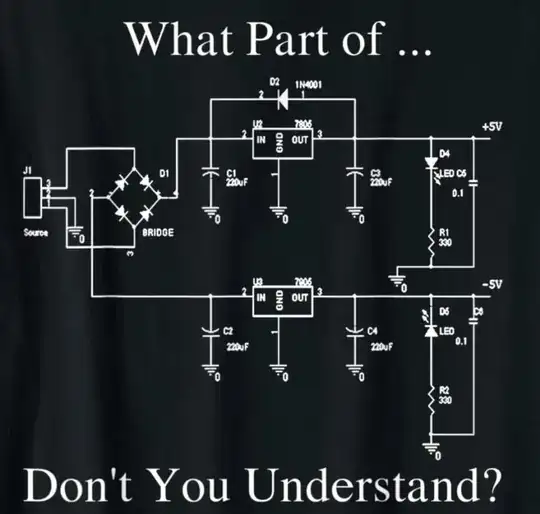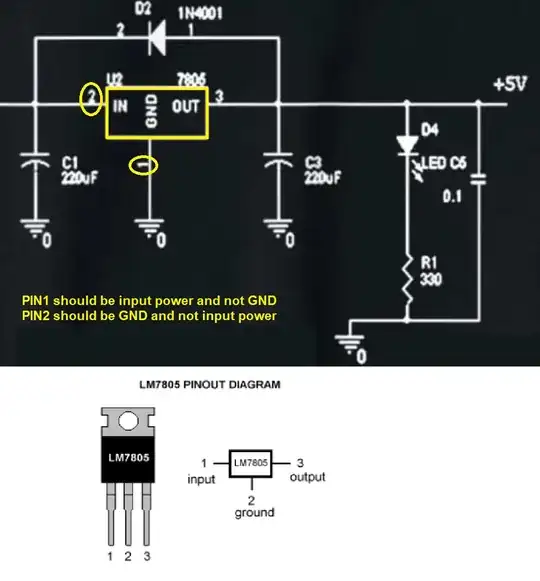By representing vintage regulator ICs in a linear power supply circuit with an irascible title, the message, to me, seems most likely one of excluding the alternative: "I don't want your steenkin' switching power supply". Perhaps the user has been burned by too many noisy or otherwise faulty SMPSs; perhaps they just don't (potential implication: refuse to) understand them, and how to choose an effective unit, or how to filter the noise produced by a mediocre one. "Things used to be so simple."
This interpretation may reflect my own bias, of course: I am quite familiar and comfortable with SMPS, as well as the components and circuit in question, and there are few if any cases where I would strictly prefer the given circuit in my professional work. The message therefore has a certain jarring nature, which complements the irascible tone of the text.
A second level of amusement arises from the apparent hubris, noting the pinning error on the 7805, and lack of diode on the 7905. (Or, at risk of commiting further pedantism: the diodes aren't required as there is no load on the input side of the regulators; an antiparallel diode at the outputs could however prevent polarity reversal in case of an ungrounded overload condition.)
A third level of representation is off-topic, but no less relevant, so I will continue:
There is a social function: messages where one is simultaneously celebrating an achievement (knowledge of linear power supplies), while rejecting adjacent topics (switching power supplies), provides observers a hint at the psychological disposition of the bearer. Such messaging correlates with a preference for team-identity, in-group/out-group dynamics, and other authoritarian traits (as defined by e.g. Altemeyer's research). Or we can interpret the message as a preference for traditional methods over newer alternatives -- literally the "conserve" in conservatism; same correlation.
My bias note, further hints at this interpretation: notice that, to an observer outside either group (linear-prefering, SMPS-prefering), the message seems to only reflect a preference, nothing more; to an observer within either group, however, ones' bias toward or against the identifying subject, predisposes one to interpret it as rejecting the alternative. When an in-group/out-group dynamic exists around that subject, such messaging serves to reinforce the self-identity of the group(s).
These readings are contingent on the interpretation, of course, and these specific traits are not perfectly correlated with such messages, either. Mind that one needs far more (and different types of) messages, or much stronger ones, to confidently assess such traits; as I said, merely a hint, nothing more.
This subject, besides being off-topic, is of course also well outside my (professional) scope, and indeed, I don't expect you [the reader] to take it too seriously; I would invite you to read this post as an applied introduction of the topics in question, not any kind of authoritative description of them. (I'm being wordy to be precise, but this has the downside that being wordy sounds authoritative.) I would invite you to peruse the literature on the topic, including the cited author; and if you have further questions in this direction, consider asking the psych.SE.



